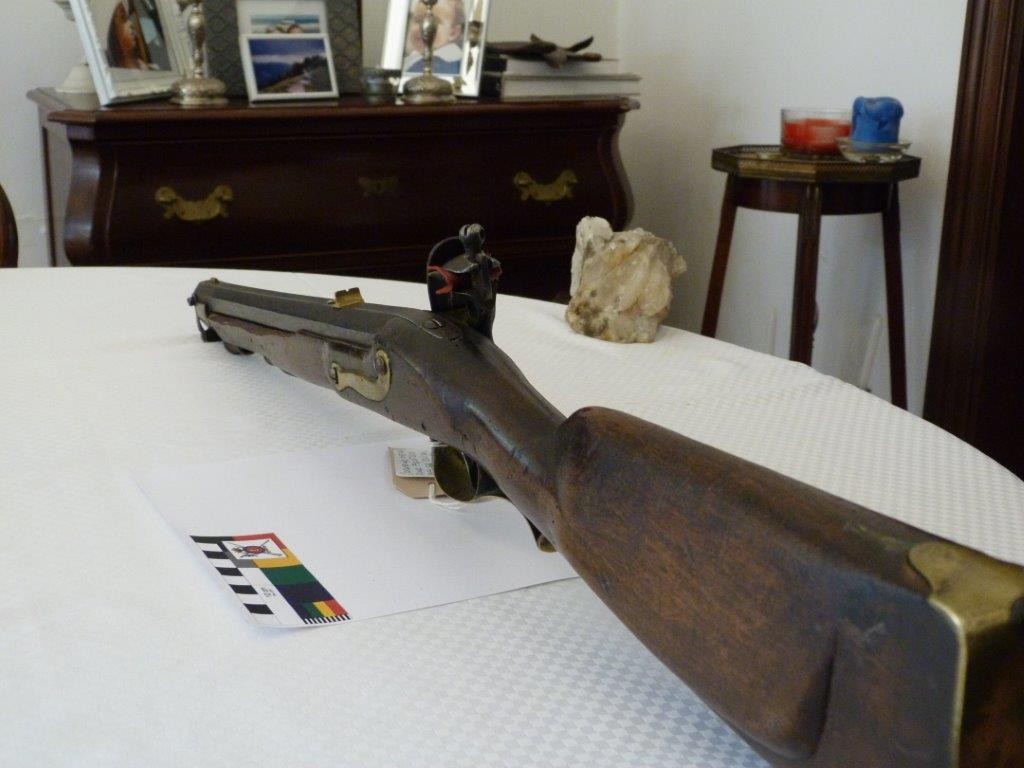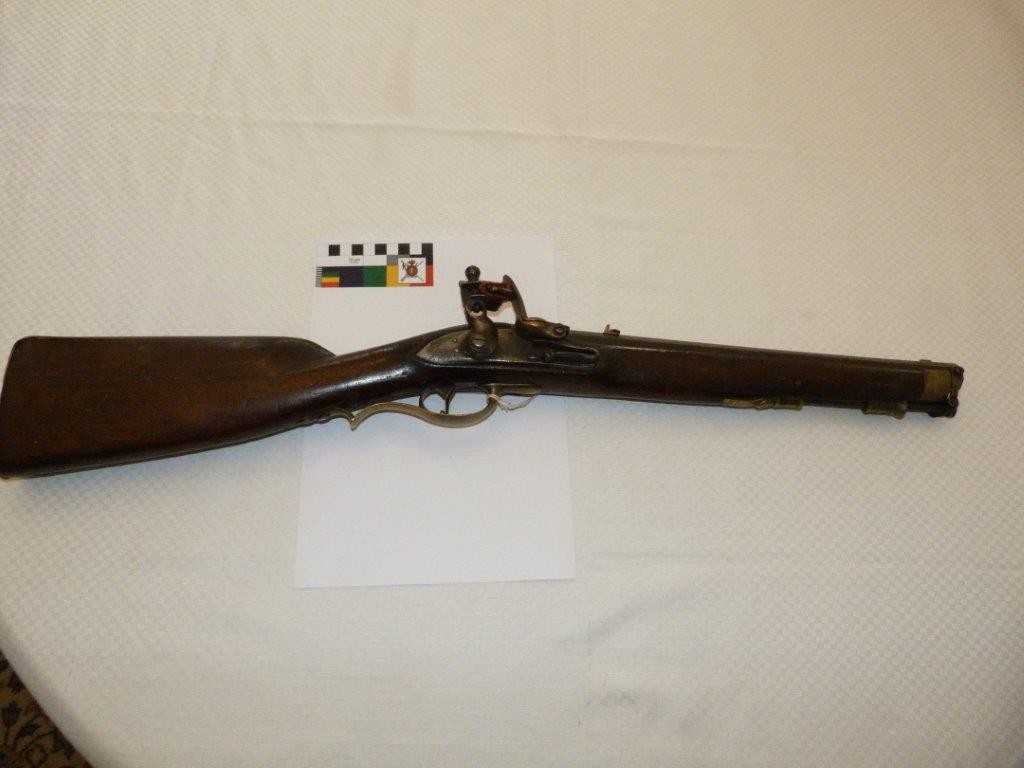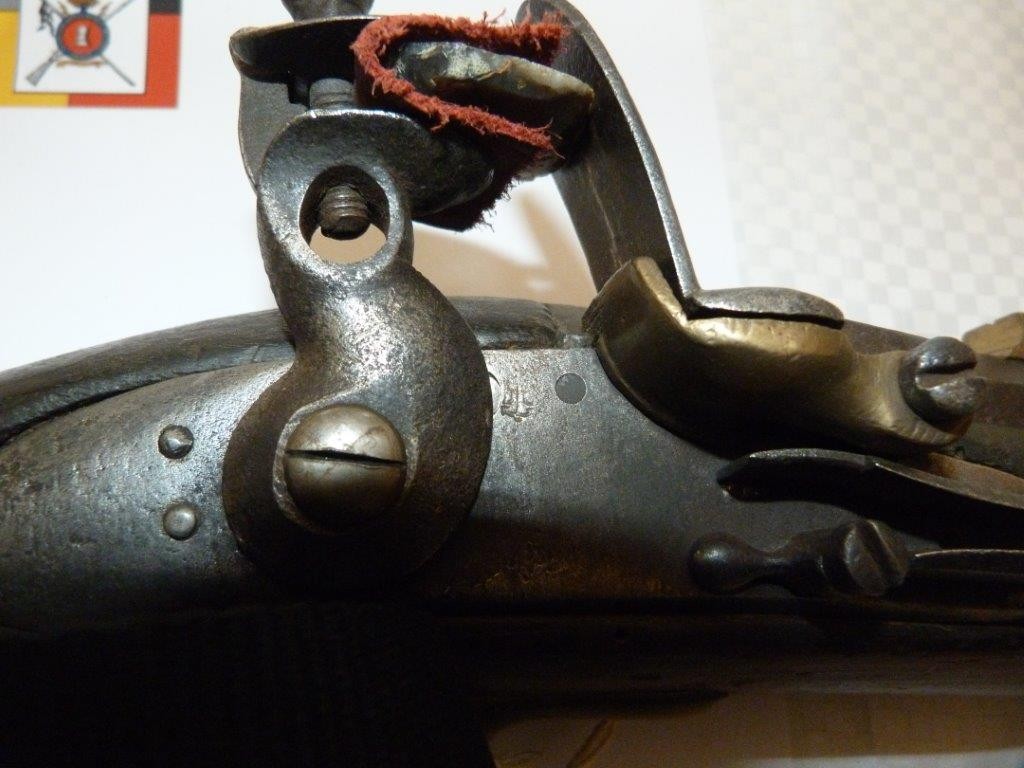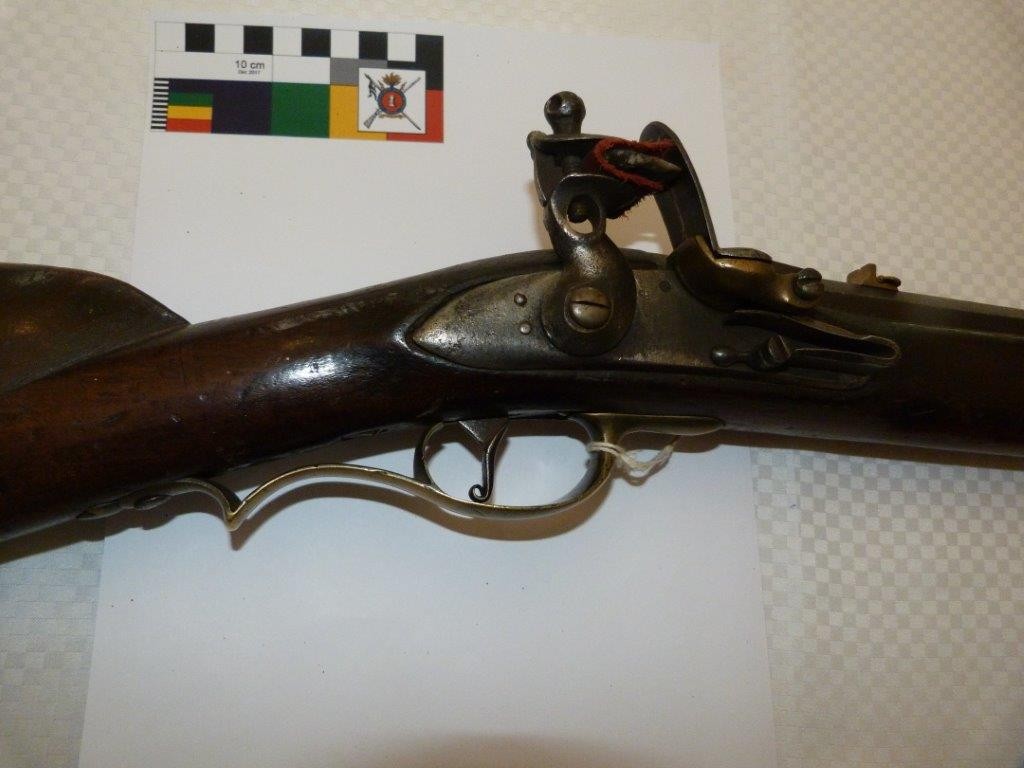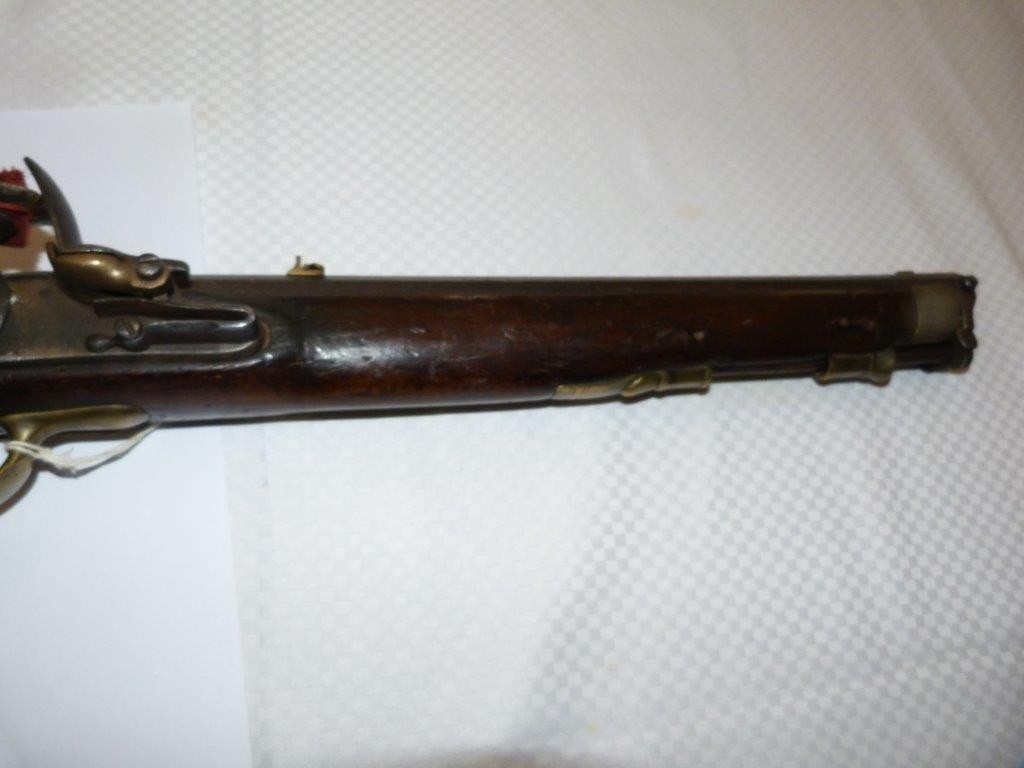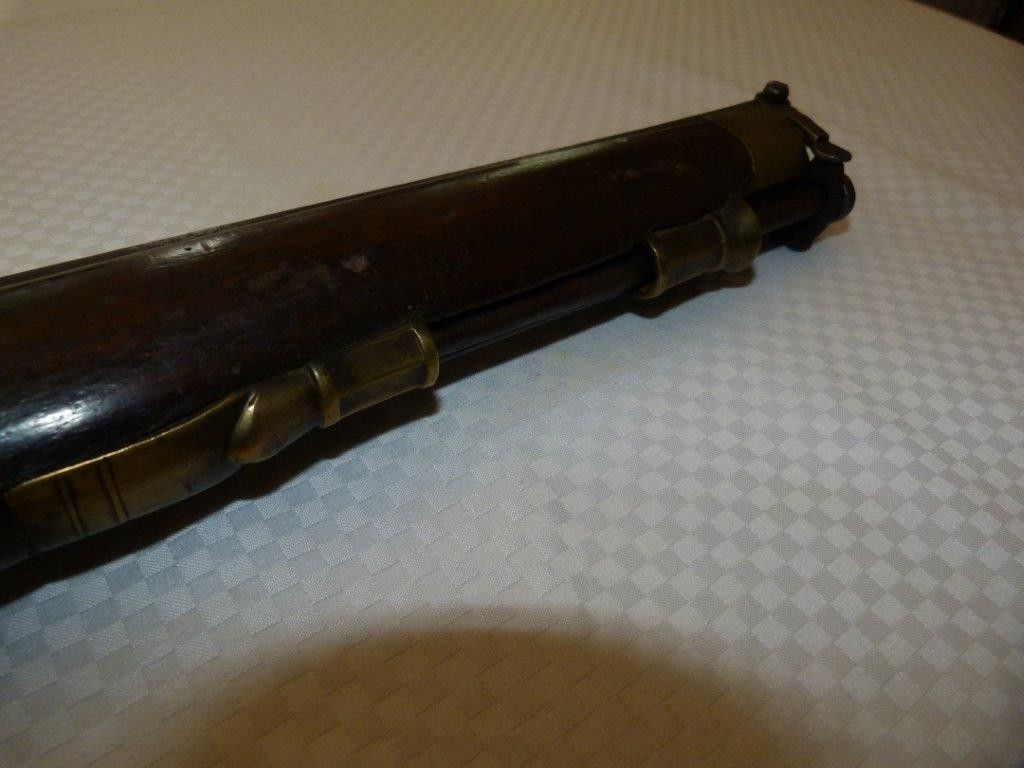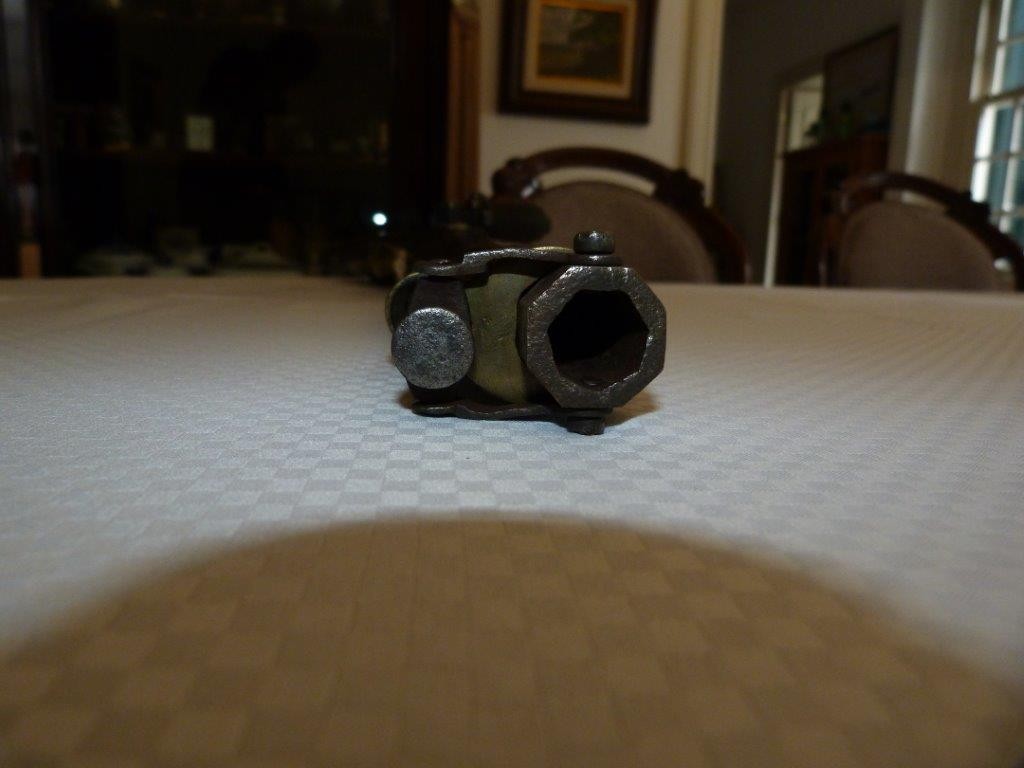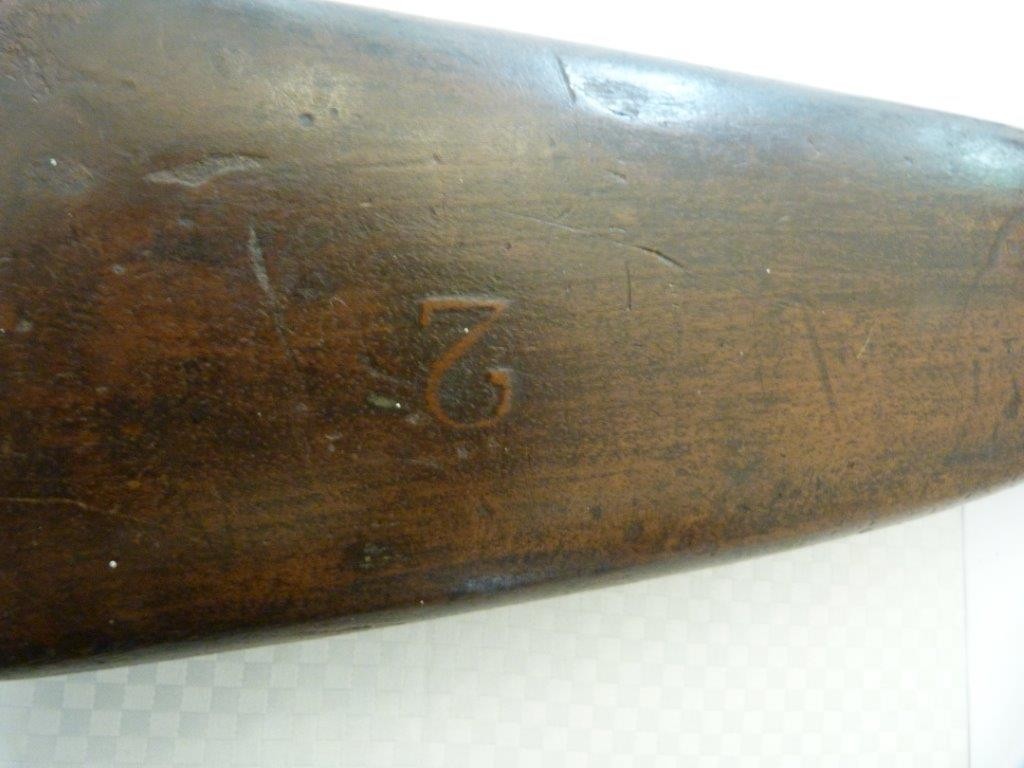Some of the most beautiful work of this craftsman, and many others, are in this book “Liège Gunmakers through their Work. 1800 - 1950”.
For more detail see: LIEGE GUNMAKERS
BERLEUR (copy)
Here is what I think may have been a coach rifle given its small size with an overall length of 76 cm and a barrel length of 38 cm. At least that's what I thought at first. However, this is the third copy I have seen. Two of them even bear a famous signature as they are Michel Berleur de Liège.
See the photos on the site : BERLEUR
(Note that there are differences between the 1793 Versailles cavalry rifle - mentioned in the notice in question, and the three examples I saw, but that is another story).
The dimensions of the two rifles signed Michel Berleur are moreover almost identical to those of the specimen presented here (the interior diameter of the barrel is however a little smaller, since of 15 mm). Also with the same rocking rod. Same trigger guard. Here, the octagonal barrel is 16/18 mm; it was undoubtedly rifled at the origin since there is a rise with two leaves (as on those of Berleur).
No signature here: you can see "something" (two initials?). on the lock, but it's not decipherable (for my old eyes anyway). One team member suggests that it could be DC surrounding an anchor found on a weapon intended for the U. S. military during the Civil War.
There is indeed an air of resemblance. BUT: one reads in the notice:
The DC marking surrounding an anchor: this punch is found on weapons of importation but also of US manufacture
(Colt rifle, Spencer model Navy, Enfield of marine rifle) used by the US Navy.
It could be the hallmark of a Northern Navy Yard but certainly not that of a manufacturer.
In conclusion, I believe that we must unfortunately abandon this lead. Also because Oscar Drissen was thus active in the second half of the 19th century, while this rifle is flintlock, therefore much earlier.
There is a 2 on the stock, but I do not see the meaning of it...
As Michel Berleur was active from 1780, I suggest that these three rifles may be part of a batch ordered by one or the other regiment of the Austrian army which, at the time, was strongly present in our countries until the arrival of the French troops.
GP with the help of CP and AD
